Wednesday, 6 April 2016: Inter-club Quiz
The annual inter-club quiz was contested by 17 teams from Probus Clubs in Cookstown, Dungannon, Enniskillen, Londonderry, Omagh and Strabane. The quiz master was Joseph Cummings and after 8 rounds, each with 8 questions, Londonderry Men’s Probus Club emerged as the winners of the James Eakin Shield for the third consecutive year. The Bert McCrory Cup for the best Omagh Team was won by Omagh Probus Men’s Club 1, the club having entered 3 teams. The event took place in Omagh Golf Club and guests were treated to tea, coffee and refreshments during the half-time interval. The morning also included a succesful raffle with prizes donated by members of Omagh Probus Club.
![Londonderry Probus Quiz Team receiving the James Eakin Shield from Omagh President, Paul Gallagher, [centre] [L – R] James Stewart, David Burke, George Glenn and Jim Moore](http://www.omaghprobusclub.org.uk/wp-content/uploads/2016/08/p8sm_derrymen.jpg)
[L – R] James Stewart, David Burke, George Glenn and Jim Moore
![Receiving the Bert McCrory Cup from Omagh President, Paul Gallagher [second left] are Omagh Men 1 [L – R] Kenneth Collins, Eamon Cunningham, Oliver Loughran, Michael Collins](http://www.omaghprobusclub.org.uk/wp-content/uploads/2016/08/P8sm_omaghmen.jpg)
[L – R] Kenneth Collins, Eamon Cunningham, Oliver Loughran, Michael Collins
Author: OPC
Michael Cooney: Sacred Heart Church
Wednesday, 30 March 2016: Michael Cooney: Sacred Heart Church
![[L - R] Club Secretary, Gerry McGonigle with Club Member, Michael Cooney](http://www.omaghprobusclub.org.uk/wp-content/uploads/2016/08/p8sm_cooney.jpg)
Michael chose just 100 of his 1000+ photos of the church to illustrate his talk. Starting outside Michael showed a photo of two plaques on the smaller, St Patrick’s spire recording the placing of the corner stone and the dedication on completion of the church in 1899. The church was not consecrated until 1954 when the outstanding head rent was paid off. The church was designed by William Hague of Dublin (a protégé of Pugin) and cost some £46,000. A local benefactor, Edward Boyle, contributed £10,000 and other contributions came from Tyrone emigrés in the USA, Canada and GB. Photographs of the façade showed the detail in the stonework, images inspired by nature and the Gospel story. Carvings of oak leaves and shamrocks sit beside sculptures of the Saints and the Holy Family. Inside the beauty continues in the decorated capitals atop each of the columns, in the pulpit and altar rails, in the extensive wood carvings. The walls soar upwards to the beautiful wooden ceiling, honey-coloured when the sun streams through the stained glass windows. The magnificent East Window is particularly noteworthy. For visitors to Omagh the Sacred Heart Church stands today as a testament to both faith and beauty and is one of the treasures of our town.
Albert Allen: Mapping Ireland
Wednesday 23 March 2016: Albert Allen: Mapping Ireland
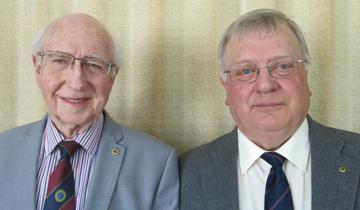
Having introduced himself as a land surveyor/cartographer with almost 50 yrs experience, Albert Allen talked about the mapping of Ireland between 1822 and 1836. This mapping was the first time a whole country was mapped at large scale. The man in charge was Lt.Col. Colby, an experienced surveyor who won the case for adopting the English standard yard as his base measure as opposed to the Irish perch of 7.0 yards related to the Irish mile. In the 19th century, surveyors used a system called triangulation. The method was to establish a baseline, and from this measure the angles in the network of triangles throughout Ireland. Some of these measurements were over 50 miles. A team of surveyors would shine a limelight which could be observed from other mountains. Angles were measured by purpose built theodolites. The baseline was a precisely measured line of almost 8 miles. It was re-measured in the 1960s using electronic distance measuring and found to be correct to less than 1”. Albert illustrated his talk with early maps of Omagh and was thanked for a fascinating lecture by Harman Scott
John Colhoun: Omagh “Accies”
Wednesday, 16 March 2016: John Colhoun: Omagh “Accies”
![[L - R] Derick Rainey, John Colhoun](http://www.omaghprobusclub.org.uk/wp-content/uploads/2016/08/p8sm_colhoun.jpg)
Through the use of archive photographs John brought to the screen several names and faces well known to many of those present. He recounted how the club had been formed by Dai Waterson Tom Hendly and Billy Beatty in 1952 and how the first matches were played on school pitches in Campsie. From 1955 to 1969 the Club was based in the Showgrounds before moving to its present location on the Derry Road. The site was purchased from local landowner, Robert Campbell, for £10,500, with money gifted to the club by the Mellon Foundation after whom the playing fields are named. The first of many club tours took place in 1956 when the team recorded an away win against “Racing Club de Paris. Tours to Canada, the Unites States and Australia followed with club growing all the while in confidence and stature. Promotion to the All-Ireland League in 1997 and success at Junior and Senior level saw the club’s collection of silverware grow. John rounded off an interesting talk with fond reminiscences about some of those who had served the club long and well over many years including “The Beat” and Dick Hinds, a former President of Probus. He was thanked by Derick Rainey who complimented John on his own dedication to the “Accies”, as Player, Captain, Coach, President and Chairman.
Inter-schools Debate
Wednesday, 9 March 2016: Inter-schools Debate
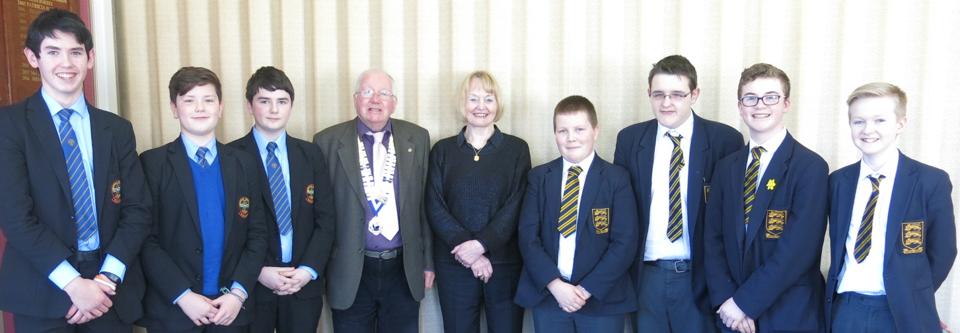
The motion that “This house believes that social media is destroying society” was proposed by Conall Rice [CBS] supported by Oisin McGuigan and Conor Lalsingh and opposed by Ryan Kane [OA] supported by Adam McFarland and Lewis Bratton with Harry Grace in reserve. All boys were third year pupils in their respective schools and spoke with a confidence and maturity which belied their age.
Conall opened for the proposition by arguing that the friendship which social media claims to promote cannot be achieved via a keyboard. Those who use Facebook often divulge enough personal information to make themselves targets for those who have posted fake profiles. Oisin developed the theme by graphic reference to users of social media hounded to suicide by internet predators. Conor observed that social media was making it increasingly difficult for some to distinguish between real and virtual relationships. Social media makes it easy for people to make out they are doing better in life than they actually are, causing others to become depressed.
Replying for the opposition Ryan began by identifying the huge commercial success of Social media and the billions of dollars of business generated by on-line trading. Far from destroying society the largest companies had donated billions to charity in their efforts to make society better. Adam pointed out that it was not the medium which was responsible for on-line bullying but the individuals who use it. He quoted examples of how people had been helped by social media in their search for missing persons and pets. Facebook was a way of communicating; Skype was a way of staying in touch and Google was a way accessing information on a global scale; Lewis developed the debate by describing how useful social media was in the classroom believed more kindness was exchanged in social media than hurt, and more happiness spread that harm.
The motion that was carried by 14 votes to 13, which accurately reflected the closeness of the debate. The teams were thanked for their participation by Probus President, Paul Gallagher and warmly congratulated by Probus members keen to say how much they had enjoyed the occasion.
Jim McBain: Keeping Churches Safe
Wednesday 2 March 2016: Jim McBain: Keeping Churches Safe
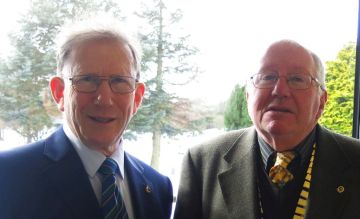
Club member, Jim McBain began by regretting that discussion about keeping churches safe for children and vulnerable adults was necessary, but news reports in recent times showed that it was now a concern for all church communities. Speaking as a member of the Methodist Church he described how each Methodist Church now had a “Designated Person” to ensure compliance with the law on safeguarding and child protection and the implementation of church policy. However all denominations were now committed to making churches safe with everyone – honest about the unpalatable possibility that congregations can house both Abusers and the Abused. Using training materials prepared by the Irish Methodist Youth and Children’s Department he examined the issues which this created and went on to demonstrate how volunteer youth workers were trained. This covered health and safety on church premises, interacting with children and the duty of care of adult leaders. He concluded by listing the questions which have to be asked to ensure that the church is a safe place for everyone. Jim was thanked for his talk by Probus President, Paul Gallagher, not least because he had stepped in at very short notice for a speaker who had been due to attend.
Clement Kennedy: Animal Welfare
Wednesday, 24 February 2016: Clement Kennedy: Animal Welfare
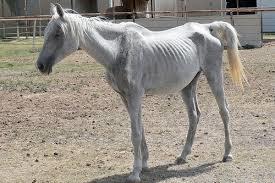
Clement Kennedy has been in local NI government for over 20 years and curently manages the Animal Welfare service in the Western region. With a budget of £1.1m his department is responsible for the welfare of non-farmed animals, with 9 Animal Welfare Officers to cover the whole area. The main offences are causing unnecessary suffering or failing welfare, with distressed horses being the most common cases. Between 2012 to 2016 a total of 21,773 calls had been dealt with, resulting in 57 prosecutions, 88 “disposals” (enforced moving to new home), and the serving of 756 improvement notices. On a lighter note Mr Kennedy appealed to all those who wish to contact the call center to ensure that their concerns are genuine, as it is common for reports of a “dead” horse in a field to turn out to be a healthy horse simply sleeping! Whilst horses are able to sleep standing up, they do like to have a good lie down sometimes! Newspaper reports were not always accurate, but recently they did have a case of 47 cats in a home where the owner had become sick. All the cats were successfully re-homed and the home owner herself was also helped. He was thanked for his talk by Probus member, Desmond Smart
Probus Clubs of Omagh Business Meeting
Wednesday, 17 February 2016: Probus Clubs of Omagh Business Meeting
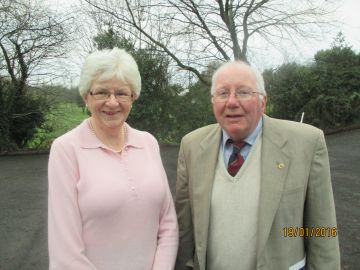
On Wednesday 17th February members of Omagh and District Ladies Probus Club joined with members of the Men’s Club for the first joint meeting of the Probus Clubs of Omagh. The purpose of the meeting was to consider a proposition that the Probus Clubs of Omagh might host the next All-Ireland Probus Rally. In 2015 the All-Ireland Rally was hosted by the Probus Clubs of Ennis, Co Clare with the expectation that the 2017 Rally would be hosted by a club in the North of Ireland. The Omagh clubs were greatly encouraged by news that the Silverbirch Hotel was building a new Conference Centre with a seating capacity of 400, this being the number that usually attends these events In preparation for the meeting a delegation from the Omagh Clubs had travelled to Coleraine to meet with the organising committee of the 2014 All-Ireland Rally hosted by the Coleraine Club. The report back was positive and after discussion a committee was formed with members from both clubs to further explore the notion of bringing the All-Ireland Probus Rally to Omagh in May 2017.
Shirley McCay: Playing Hockey for Ireland
Wednesday, 10 February 2016: Shirley McCay: Playing Hockey for Ireland
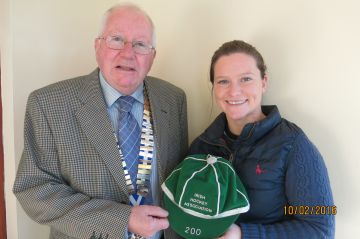
Shirley was introduced by Probus Vice-President, John McCandless, who began by congratulating her on being the most capped Irish sports person ever, having played hockey for Ireland 214 times. She proudly displayed her 200th Cap and the shirt which she wore in her 200th game and passed around her scrapbook. She paid tribute to Miss Mary Swan, Head of Girls P.E. in Omagh Academy who had inspired her. As Captain of Hockey, Shirley had led her team to victory in the Senior Schools Cup and gone on to win the All-Ireland Cup. Shirley won her first Senior Cap, aged 18 while a student at the University of Ulster, in a match against Canada. It was the beginning of an international career which took her to countries all over the world. Her only real disappointments came when Ireland twice just failed to qualify for the Olympics in London 2012 and Rio 2016. She currently plays for “Old Alex” in Dublin and works as a Talent Coach for Uster Hockey, in which capacity she continues to meet her many palls in Omagh Ladies and visit her old school where she remains an inspiration and role model. Having answered many questions she was warmly thanked by Probus member, Wilbour Knox.
John McCandless: Environmental Health in Tanzania
Wednesday, 3 February 2016: John McCandless: Environmental Health in Tanzania
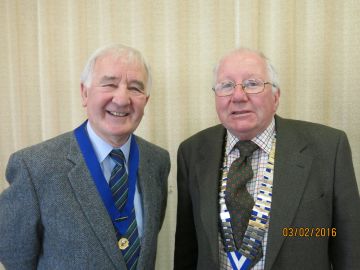
Probus Vice-President, John McCandless, delivered a very interesting talk about Environmental Health in Tanzania. He began by relating how a former colleague, Clarence Phenix, had developed strong links with Tanzania. Following his death and in honour of his memory John and his colleagues in N.Ireland renewed contacts with Tanzania, with offers of help. Soon they found themselves assisting with the development of a new BSc. course in Envirinmental Health and with administering a world wide fund to raise money for a new technical reference library. Using his influence as Chairman of the Chartered Institute in the UK and as a member of the International Federation, representing about 40 countries, he was able to raise funds from around the world to create the library in the University of Muhimbili, Tanzania. In addition three graduates from Tanzania were helped to attend university in Manchester where they took Master’s Degrees in Environmental Health, thus enabling them to lecture on degree courses on their return to Tanzania. There is now an intake of 110 undergraduates per year on this course and a further 300 Diploma students in 6 centres around the country. This injection of new graduates has had a significant impact. In 1995 life expectancy at birth in Tanzania was about 39 years; today it is 61. John and his Northern Ireland colleagues were honoured for their work by the people of Tanzania and by their profession worldwide. He was thanked for his talk by Alastair Orr